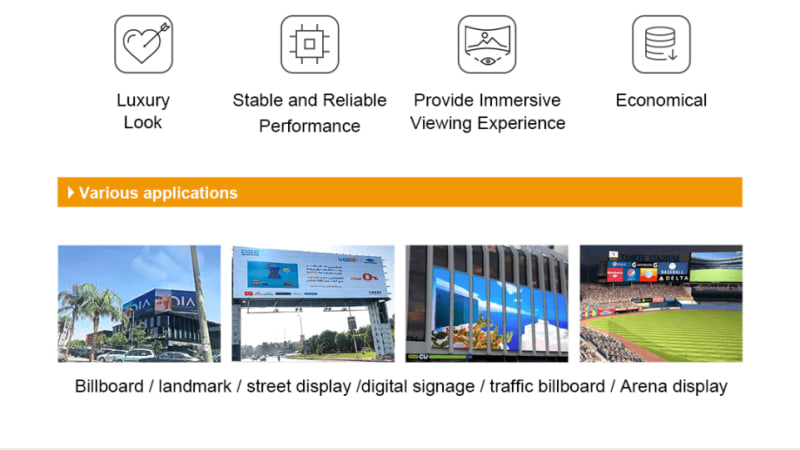In today's era of high attention to energy conservation, the energy-saving concept of LED displays has become one of its most eye-catching features and one of the reasons for its explosive market growth in recent years.

How can today's LED displays become more energy-saving through technical means?
Further improving the energy-saving performance of LED displays has become a technical focus pursued by the industry. Many companies are making improvements in various aspects to further improve energy-saving effects. However, achieving greater energy savings will require a concerted effort across the industry.
Recently, a few energy-saving LED displays have appeared on the market. By improving the power supply, LED displays have achieved significant energy-saving effects, attracting the attention of many consumers and receiving high expectations. LED display manufacturers are eager to give it a try. Teach you 10 guidelines for choosing LED display manufacturers.
Based on the current technology, the energy-saving effect of LED display screens mainly focuses on the improvement of power supply:

Use high-efficiency switching power supply: Directly using half-bridge or full-bridge high-efficiency switching power supply, combined with synchronous rectification technology, can significantly improve the energy-saving effect.
Reduce the power supply voltage: In the state of driving IC constant current, reduce the power supply voltage as much as possible, and achieve better energy-saving effects by separately supplying red, green, and blue LEDs.
However, the application cost of this non-standard voltage power supply and new technology will inevitably rise. From the perspective of the screen driver IC, the energy-saving effect is not obvious. Reducing the driving constant current voltage difference may bring new problems, including cost issues. The energy-saving design promoted by some IC companies is often a sales strategy.

How to further realize energy saving of LED display screen?
The LED display itself has a brightness self-adjusting function, which is one direction. By adjusting the brightness of the LED display, energy-saving goals can be better achieved.
Another aspect is that the luminescent materials used in LED displays are themselves energy-saving products. However, due to the large area and high brightness of outdoor display screens, power consumption is still large. In this regard, the brightness self-adjustment function of LED displays becomes very important. Here's what you need to know about nit brightness.
Self-regulation of brightness requires certain technical support, but for advertising owners, it is an important energy-saving means. Advertising owners tend to choose LED displays with good energy-saving effects. Especially for advertising screens that need to be run outdoors for a long time, the power consumption is considerable.

Although there may be a large investment in the early stage, in subsequent operations, the energy-saving effect of the LED display will be proven through savings in electricity and maintenance costs. The choice of advertising owners will have a positive impact on the R&D and production direction of LED displays.
Thank you for watching. I hope we can solve your problems. Sostron is a professional LED display manufacturer. We provide all kinds of displays, display leasing and display solutions around the world. If you want to know: Introduction to the composition of LED display driver and system architecture. Please click read.
Follow me! Take you to know more about led display knowledge.
Contact us on WhatsApp:https://api.whatsapp.com/send/?phone=8613570218702&text&type=phone_number&app_absent=0



















